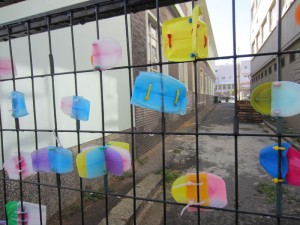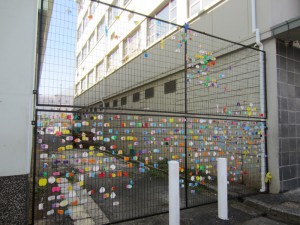Some references to ideas and material that came up in the class’ first site investigations.
Cemetary project: Sky burials, including ref to vultures dying from pharmaceuticals etc (http://en.wikipedia.org/wiki/Sky_burial, http://www.treehugger.com/renewable-energy/solar-replaces-vultures-traditional-sky-burials-vultures-may-come-back.html and this looks like an interesting site in general: http://www.dailyundertaker.com/2009/02/vulture-club-tower-of-silence.html); The American Way of Death http://en.wikipedia.org/wiki/The_American_Way_of_Death; and eco coffins.
Oak trees parking: tree-sitting and tree-spiking in the anti-logging and anti-roads movements: http://en.wikipedia.org/wiki/Tree_sitting and http://en.wikipedia.org/wiki/Tree_spiking. See ‘monkey wrenching’ more generally: http://earthfirstjournal.org/subsection.php?id=2 and http://theanarchistlibrary.org/library/Various_Authors__Ecodefense__A_Field_Guide_to_Monkeywrenching.html Re ecology and value, a resource is Henrik Ernstson’s work at UCT: http://www.rhizomia.net/#!/p/publication-list.html
Woodstock railway site: that washing power in a matchbox made me think of a recent article I read about how poor people in Cape Town buy food and supplies in very small quantities, in little packets for a few rands or cents, as all they can afford; also the alternative ways of valuing people, things and spaces than according to their economic output or consumption. Sorry no links yet! 🙂
Frog canal: performance artist Mark MccGowan pushing a peanut through London with his nose http://en.wikipedia.org/wiki/Mark_McGowan_%28performance_artist%29; under road tunnels for wildlife http://en.wikipedia.org/wiki/Wildlife_crossing and in pictures
Observatory wasteland: notions of alchemy and natural magic… in your later account of how you might use materials from the site, especially re melting and reforming waste glass, I thought of the toaster project (how to attempt to make something from available materials) http://www.thetoasterproject.org/ This relates too to one of my favourite metaphors for DIY replication of technology, a ‘cargo cult’ approach: http://en.wikipedia.org/wiki/Cargo_cult
Noordhoek vlei: Mark Lombardi’s mapping techniques could be useful for showing the different groups involved in this issue http://en.wikipedia.org/wiki/Mark_Lombardi; Trevor Paglen is a geographer and artist who does investigative work http://www.paglen.com/; and I thought somehow of this project to make warning signs for nuclear waste that will be readable forever (there are many articles online about it)… http://www.salon.com/2002/05/10/yucca_mountain/

